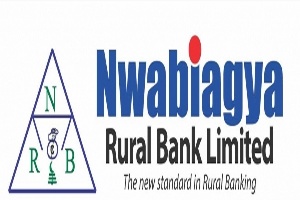Share holders of the Nwabiagya Rural Bank limited will from Monday begin receiving dividends calculated at six pesewas (GH¢0.06 per share) accruing to them for the 2016 financial year.
This is a rise in the bank’s dividends of GH¢0.045 posted in the 2015 financial year and 0.GH¢035 which accrued to ordinary share holders in the year 2014.
The bank currently has a total of 17,278,340 ordinary shares which translates into some GH¢771, 730.20 expected to hit the accounts of shareholders of the rural bank by Monday.
The Board Chairman of the Nwabiagya Rural Bank, Nana Owusu Sarfo Awona the second gave the breakdown and assurances at the 23rd Annual General Meeting (AGM) of the bank which was held on Friday at Barekese in the Atwima Nwabiagya district of the Ashanti Region.
Relaying the performance of the bank, Nana Awona II indicated that “Notwithstanding the economic turmoil’s and other exogenous destructions within the contest of both the global and the national economies, the performance of the Nwabiagya Rural Bank in 2016 was very encouraging.
He pointed out that “deposits grew by approximately 25% whiles investments also grew by 19%. The bank’s total assets also grew by 21% and the banks share capital also increased from a total of 2287,789 in 2015 to close at 2,355, 844 in the year 2016.”
Speaking to Ultimate News’ Ivan Heathcote-Fumador on the sidelines of the AGM, the President of the Ashanti region chapter of the Association of Rural Banks and the Board Chairman of the Atwima Kwanwoma Rural Bank Mr. Patrick Owusu expressed satisfaction with the performance of rural banks in the Region.
He was confident, “the Ashanti Region has the best of the rural banks in the country. We have about twenty four rural banks and most of them are doing well and contributing to the macro economy of our country.”
He outlined that the central geographical location of the region in the country and the huge number of Small and Medium Scale Enterprises (SMEs) in the region underpinned the success of several of the rural banks located in the Ashanti region.
Business News of Friday, 8 September 2017
Source: ultimatefmonline.com













